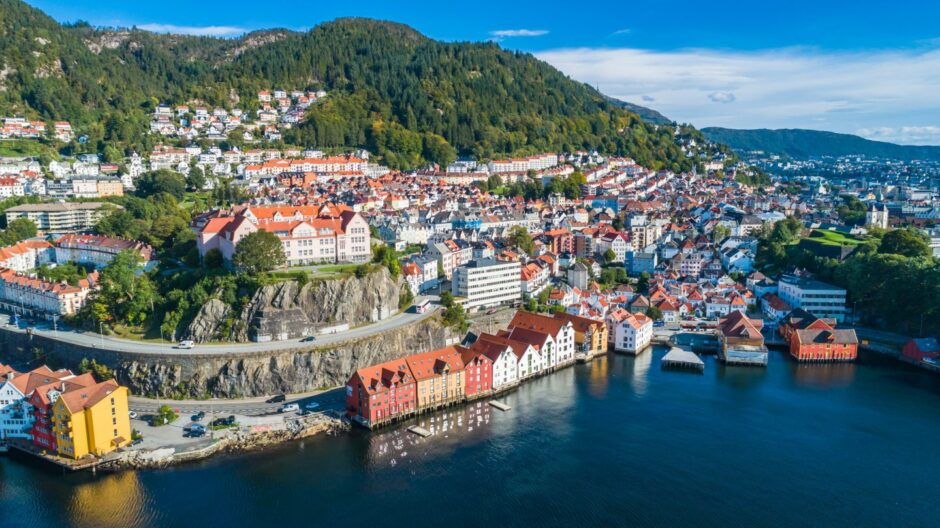
It’s very difficult for me as a supporter of Scottish independence to write about Norway – or Denmark and some other small countries for that matter – without becoming extremely hot under the collar.
The rate of energy related technology progress in Norway, the growth of their Net Zero supply chain, their wealth fund, the global expansion of their majority state owned energy companies Equinor and Statkraft lead to me constantly asking the question “Why isn’t this happening in Scotland?”. The contrast between two countries with a similar size populations couldn’t be greater.
Some examples: today Norway boasts three hydrogen electrolyser manufacturers that I’m aware of, at least two fuel cell manufacturers including one making advanced systems for marine applications and two companies manufacturing hydrogen storage systems with another about to be formed.
One of those companies already has a global presence and is supplying 750 bar high pressure Type 4 carbon fibre cylinders to hydrogen lorry builders as well as existing hydrogen fuel cell car manufacturers. Scotland has none of this.
Equinor developed the world’s first floating wind farm, ironically, just off Peterhead in Scotland. Now, it is also developing various CCUS projects in England and Scotland and has plans to build a hydrogen production plant on Humberside.
Statkraft owns, amongst other assets, solar farms in Albania and Spain, wind in Ireland and is buying the entire output from the Kincardine floating windfarm project off Scotland. I wonder how many Scottish companies own windfarms or any other generating capacity in Norway. Don’t bother to look. Google says none.
State ownership in Norway is supported by the main political parties. For ideological, not economic or industrial strategic reasons, the UK main parties still oppose it.
Kongsberg is a major manufacturer of advanced dynamic positioning systems, builds subsea cameras, acoustic navigation systems, high precision acoustic multibeam seabed mapping systems and one of the worlds first autonomous underwater vehicles called Hugin for which it’s recently received a substantial new order. It is also a major defence contractor and even has work with the UK Ministry of Defence. It is also majority state owned.
In Bergen – my favourite Norwegian city – there is a company that’s using carbon dioxide to produce carbon nano fibres which is carbon fibre at the “nanometre scale, consisting of several graphene flakes”.
Hystorsys A/S is a spin-off company from the Norwegian Institute for Energy Technology and has developed a hydrogen storage system using metal hydride technology plus the compressors needed as part of the overall system. The company has recently been awarded the contract for a hydrogen storage facility based on Metal Hydride at Vestsiden Junior Highschool in Kongsberg.
Norway has already built a hydrogen ferry and is now developing a hydrogen fishing boat. It currently has two research centres dedicated to hydrogen production and fuel cells. One is also working on the use of ammonia. Scotland has 19 universities. Norway runs rings round them in this sector.
Norway’s GDP is pretty much double that of Scotland at $482bn and if you’ve read this far it’s not difficult to appreciate why. It’s how it got there that intrigues me and I believe it has a lot to do with both ideology over state ownership, a lack of an industrial strategy and the attitude of the financial sector.
A recent article in The Economist explained that compared to many of our competitors “Britain is a great place to start a company, but a bad one to scale it up” because too often, the equity capital dries up along the way. Frankly, I’m not now sure it’s even a good place to start a company particularly if you want to manufacture something.
There is also a huge contrast between Scotland and Norway in financial support infrastructure, notably the banks. At the last count Scotland had one private bank for the wealthy. I don’t count the Bank of Scotland as it’s now owned by Lloyds.
On the other hand and according to “Finans Norge” the Norwegian banking sector consists of a few very large commercial banks, some regional based and several small savings banks. At the end of 2020 there were 134 banks operating in Norway, 118 were Norwegian and 16 branches of foreign banks. They all strongly support the ESG (Environmental, Social, and Governance) agenda which probably helps explain why support for many of the companies I’ve mentioned is so strong.
By now you should understand why writing about Norway is bad for my blood pressure!
Dick Winchester is a former subsea engineer and an adviser to the Scottish government on the energy transition.
Recommended for you

 © Shutterstock
© Shutterstock